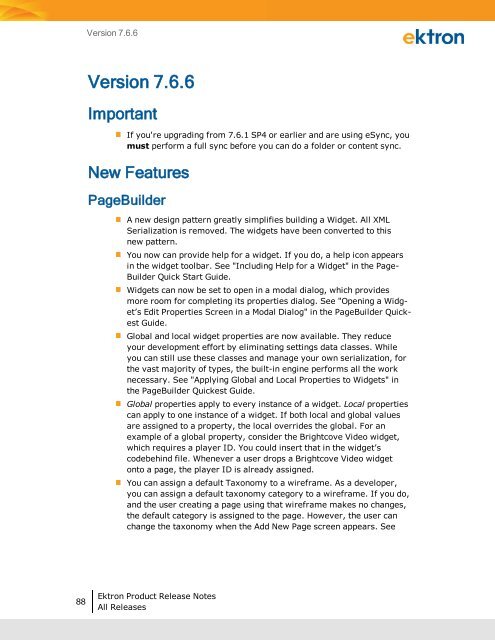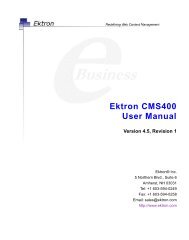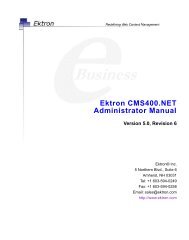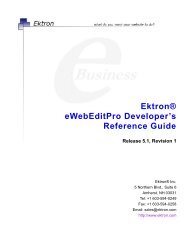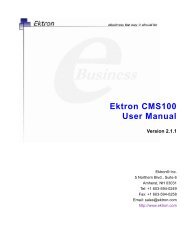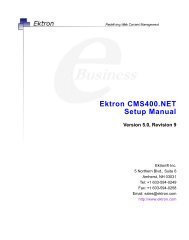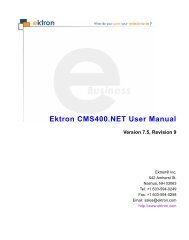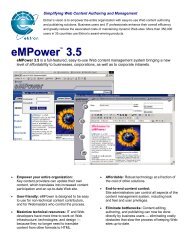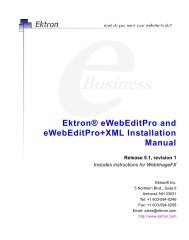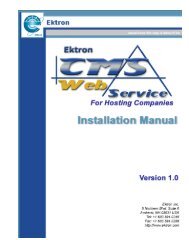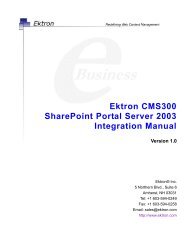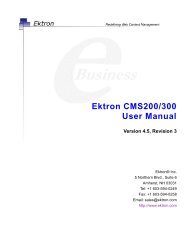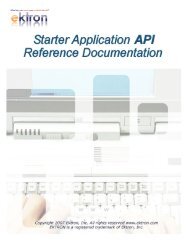Create successful ePaper yourself
Turn your PDF publications into a flip-book with our unique Google optimized e-Paper software.
88<br />
Version 7.6.6<br />
Version 7.6.6<br />
Important<br />
If you're upgrading from 7.6.1 SP4 or earlier and are using eSync, you<br />
must perform a full sync before you can do a folder or content sync.<br />
New Features<br />
PageBuilder<br />
A new design pattern greatly simplifies building a Widget. All XML<br />
Serialization is removed. The widgets have been converted to this<br />
new pattern.<br />
You now can provide help for a widget. If you do, a help icon appears<br />
in the widget toolbar. See "Including Help for a Widget" in the Page-<br />
Builder Quick Start Guide.<br />
Widgets can now be set to open in a modal dialog, which provides<br />
more room for completing its properties dialog. See "Opening a Widget’s<br />
Edit Properties Screen in a Modal Dialog" in the PageBuilder Quickest<br />
Guide.<br />
Global and local widget properties are now available. They reduce<br />
your development effort by eliminating settings data classes. While<br />
you can still use these classes and manage your own serialization, for<br />
the vast majority of types, the built-in engine performs all the work<br />
necessary. See "Applying Global and Local Properties to Widgets" in<br />
the PageBuilder Quickest Guide.<br />
Global properties apply to every instance of a widget. Local properties<br />
can apply to one instance of a widget. If both local and global values<br />
are assigned to a property, the local overrides the global. For an<br />
example of a global property, consider the Brightcove Video widget,<br />
which requires a player ID. You could insert that in the widget’s<br />
codebehind file. Whenever a user drops a Brightcove Video widget<br />
onto a page, the player ID is already assigned.<br />
You can assign a default Taxonomy to a wireframe. As a developer,<br />
you can assign a default taxonomy category to a wireframe. If you do,<br />
and the user creating a page using that wireframe makes no changes,<br />
the default category is assigned to the page. However, the user can<br />
change the taxonomy when the Add New Page screen appears. See<br />
<strong>Ektron</strong> <strong>Product</strong> <strong>Release</strong> <strong>Notes</strong><br />
All <strong>Release</strong>s


